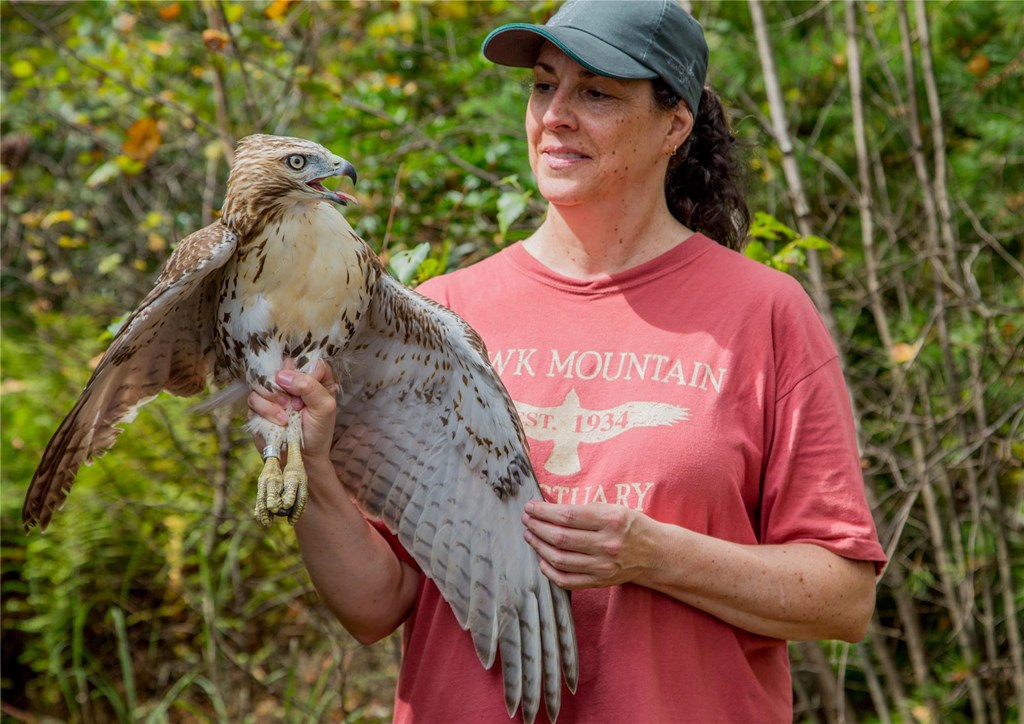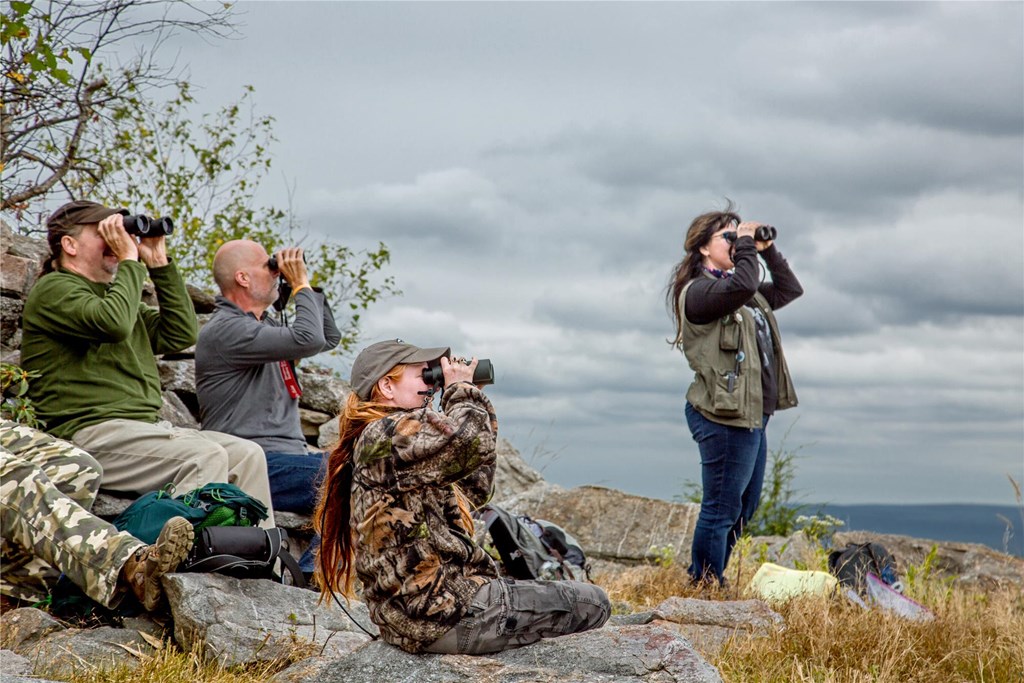Raptor Field Techniques Are Not Just for Scientists Anymore
Posted on in On the Mountain by Amy Haus

I always wondered what scientists do when they’re conducting field research on raptors. How do they collect the data, and where do they go to gather it? What technology is available, and how is it used? With all these questions in mind, I attended a workshop that answered those and other questions.
As a non-scientist, I was hesitant to sign up. I have volunteer experience with raptors in various capacities, and there was no requirement that attendees be students, educators, biologists or researchers, so I registered. That was eight years ago, when I attended the spring Raptor Field Techniques workshop at Linwood Springs Research Station in Wisconsin. I always wanted to attend the fall workshop, but life got in the way, so I was thrilled when Hawk Mountain brought the fall workshop to me!
This was the first time Gene Jacobs, who created and runs the workshop, took the workshop on the road. He and his wife, Lorraine, loaded everything needed for the workshop into their car and drove to Pennsylvania. It was no small feat packing all the necessary equipment.
Most of the attendees were like me: not scientists but interested in raptors. Along with the expected educators and college students, there was a professional photographer, a couple of medical professionals, and a retired detective. While some attendees were locals, others came from Harrisburg, Phoenixville, and Doylestown. The rest came from out-of-state: Delaware, Virginia, Washington, D.C. I was not expecting such a mix of people or for them to have traveled such distances.

The workshop was structured with lectures and hands-on exercises in the morning and afternoon with field banding exercises in the middle. The lectures covered the tools and techniques for banding birds, legal and public relation aspects of banding, technologies used in finding and tracking birds, and videos of the different aspects in action. The field activities included 3 days at a banding station and hawk watch site, one day of road trapping kestrels and vultures, and a tree climbing exercise.
The banding station and hawk watch folks were incredibly accommodating to us. They were happy to answer questions and share their experiences. Their stories filled in the slow times waiting for birds, and, boy, did they have stories! While the flight wasn’t very strong during our three days at the banding station, birds were still captured and banded every day. Most were sharp-shinned hawks, but we also got to see the capture and banding of Cooper’s, broad-winged, red-shouldered, and red-tailed hawks. The hawk watch site provided multiple sightings of the usual suspects, plus several bald eagles and a panoramic view. Two bald eagles hung around the valley, and one landed in a tree to give us great looks for quite a while.
Unfortunately, we had less luck with the kestrel and vulture trapping. We saw kestrels, but they were uninterested in the baltri trap. Insects were everywhere, so the kestrels were happy to grab them instead of coming to the trap. However, it was a picture-perfect fall day, so driving around the back roads around Hawk Mountain was not a hardship.
The vulture trap was set up at the Acopian center, where the lectures were held. We returned from the road trapping exercise to find it empty. Apparently, the vultures didn’t get the memo! Despite the absence of vultures, it was still interesting to see the trap and have the process explained.
The workshop provided a peek into what raptor field work entails and the rewards and disappointments that come with the territory. It also brought together a very eclectic mix of people with a common interest, which I was glad to experience again.